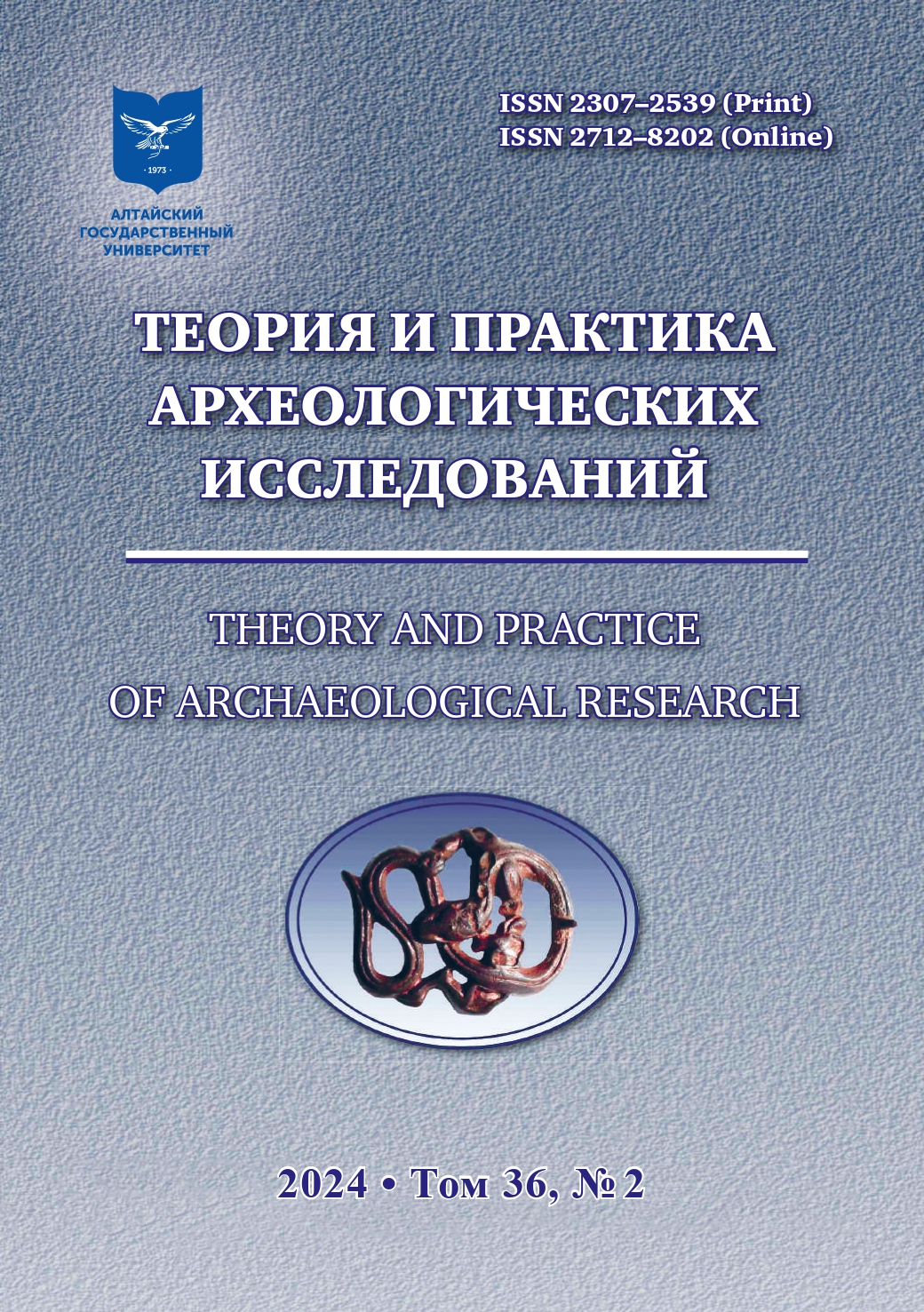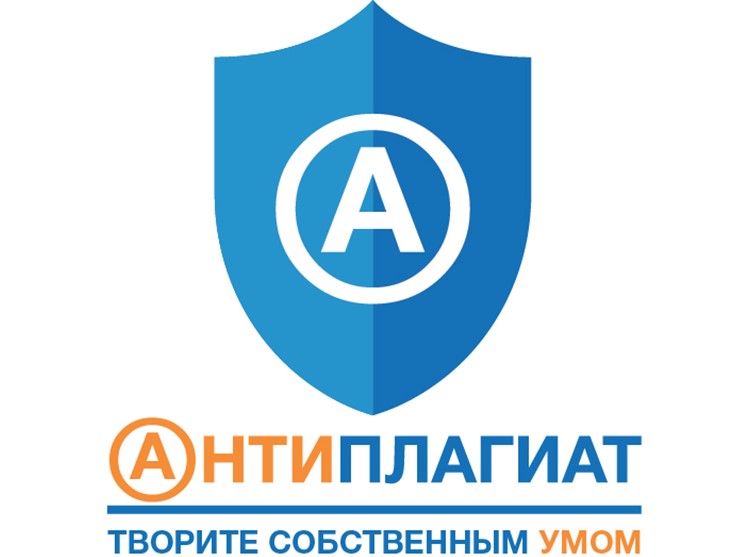БРОНЗОВЫЕ КОТЛЫ ИЗ МОГИЛЬНИКА ХОНДЕРГЕЙ-22-2 (поздний период уюкско-саглынской культуры, III–II вв. до н.э.)
Аннотация
Статья посвящена комплексному анализу находок двух бронзовых котлов, обнаруженных отрядом ТАЭ ИИМК РАН при раскопках курганного могильника позднескифского времени Хондергей-22-2 в 2021 г. Дается краткое описание истории изучения бронзовых котлов, типологии которых составлялись неоднократно. Впервые на территории Тувы были обнаружены два бронзовых котла в закрытом комплексе уюкско-саглынской культуры озен-ала-белигского этапа. Захоронение находилось в глубокой яме, в сильно разрушенном срубе, который, по-видимому, был ограблен в древности, однако многие предметы сохранились in situ. Мы исследовали состав металла, конструктивные и художественные особенности обнаруженных нами котлов. По результатам технологического анализа предметов наиболее вероятно предположение, что они изготавливались специально для погребения. Облик котлов сочетает черты, характерные для изделий скифского времени и последующего периода господства хунну, и не подходит ни под одну существующую типологию бронзовых котлов. В III в. до н.э., с началом озен-ала-белигского этапа, фиксируются изменения в погребальном обряде и инвентаре уюкско-саглынской культуры. Возникает широкое разнообразие типов погребальных конструкций, в захоронениях появляется керамика. Хотя наши находки не имеют установленных полных аналогов, мы приводим ряд схожих в той или иной мере изделий с территории Саяно-Алтая и из Монголии, Казахстана и Китая. Данные параллели позволяют более полно раскрыть проблематику культурных контактов между различными регионами Центральной Азии, обозначить возможные маршруты влияний.Скачивания
Metrics
No metrics found.
Литература
Bokovenko N.A. Typology of Bronze Cauldrons of the Sarmatian Period in Eastern Europe. Sovetskaya arheologiya = Soviet Archaeology. 1977;4:228–235. (In Russ.)
Bokovenko N.A. Bronze Cauldrons of the Epoch of Early Nomads in the Asian Steppes. In: Problems of West Siberian Archaeology. The Iron Age. Novosibirsk : Izd-vo In-ta arheologii i etnografii SO RAN, 1981. Pp. 42–52. (In Russ.)
Bokovenko N.A., Zasetskaya I.P. The Origin of Boilers of the “Hun” Type of Eastern Europe in the Light of the Problem of Hun-Hun Relations in Eastern Europe. Peterburgskij arheologicheskij vestnik = St. Petersburg Archaeological Bulletin. 1993;3:73–88. (In Russ.)
Borodovsky A.P., Novikov A.V. Medieval Cauldron from the Valley of the Kucherla River (Gorny Altai). In: Problems of Archaeology, Ethnography, Anthropology of Siberia and Adjacent Territories. Т. V. Novosibirsk : Izd-vo In-ta arheologii i etnografii SO RAN, 1999. Pp. 288–295. (In Russ.)
Borodovsky A.P., Tishkin A.A., Khavrin S.V. Preliminary Results of Studies of the Composition of Metal Products of the July Treasure (Republic of Khakassia). In: Problems of Archaeology, Ethnography, Anthropology of Siberia and Adjacent Territories. Vol. XVIII.Novosibirsk : Izd-vo In-ta arheologii i etnografii SO RAN, 2012. Pp. 175–179. (In Russ.)
Vainshtein S.I. The History of Folk Art of Tuva. Moscow : Nauka, 1974. 224 p. (In Russ.)
Vainshtein S.I., Dyakonova V.P. The Sites in the Kokel Burial Ground of the End of the 1st Millennium BC — the First Centuries AD. In: Proceedings of the Tuvan Complex Archaeological and Ethnographic Expedition [1959–1960]. Vol. II. Moscow ; Leningrad, 1966. Pp. 185–291. (In Russ.)
Demidenko S.V. Bronze Cauldrons of Ancient Tribes of the Lower Volga Region and the Southern Urals (the 5th century BC — the 3rd AD). Moscow : Editorial URSS, 2008. 328 p. (In Russ.)
Kilunovskaya M.E., Semenov V.A., Klyuchnikov T.A., Galukhin L.L., Denisenko V.L., Kirillov E.L., Lazarevskaya N.A., Mongush K..M., Mongush M.A., Semenov A.V. Excavations in the Valley of the Hondergeim River in 2021. In: Bulletin of the Institute of the History of Material Culture of the Russian Academy Sciences: (conservation archaeology). St. Petersburg : Nevskaya Tipografiya, 2021. Pp. 139–160. (In Russ.)
Kovalev A.A., Erdenebaatar D., Iderhangai T.O. The Elite Xiongnu Burial Mound Huh Uzuriyn Dugui-II-1 and Its Significance for the Reconstruction of the Funeral Ritual of the Xiongnu (preliminary report). In: Ancient Cultures of Mongolia and Baikal Siberia. Irkutsk : Izd-vo Irk. techn. un-ta, 2011. Pp. 329–355. (In Russ.)
Kyzlasov L.R. Ancient Tuva (From the Paleolithic to the IX century). Moscow : MGU, 1979. 208 p. (In Russ.)
Marsadolov L.S. Chronological Trends in the Development of Bronze Boilers in Altai and Neighboring Regions in the Hunnic Period. In: Preservation and Study of the Cultural Heritage of the Altai Territory. Issue XXIV. Barnaul : Izd-vo Alt. un-ta, 2018. Pp. 111–118. (In Russ.)
Metal Cauldrons of the Early Zhetysu Nomads. Almaty : Institut arheologii im. A.H. Margulana, 2017. 282 p. (In Russ.)
Ozheredov Yu.I. Hunnu Teapot: Formal and Chemical content. In: Modern Solutions to Topical Problems of Eurasian Archaeology. No. 2. Barnaul : Izd-vo Alt. un-ta, 2018. Pp. 230–234. (In Russ.)
Pletneva L.M., Metz F.I. The Ritual Complex of the Early Iron Age in the Tomsk Region. In: Priobye through the Eyes of Archaeologists and Ethnographers: Materials and Research for the “Encyclopedia of the Tomsk Region”. Tomsk : Izd-vo Tom. un-ta, 1999. Pp. 10–25. (In Russ.)
Sadykov T.R., Kaspari J., Blokhin E.K. Kurgan Tunnug-1 — New Data on the “Arzhan Horizon” of the Early Scythian Culture. In: Creator of Culture. The Material Culture and the Spiritual Space of Man in the Light of Archaeology, History and Ethnography. St. Petersburg : IIMK RAN, 2021. Pp. 224–246. (In Russ.)
Spitsyn A.A. Archaeological album. In: Notes of the Department of Russian and Slavic Archaeology of the Imperial Russian Archaeological Society. St. Petersburg, 1915. Vol. XI. Pp. 1–26. (In Russ.)
Takahama Shu. The Origin of the Hun-Type Cauldrons. In: Modern Solutions to Topical Problems of Eurasian Archaeology. Barnaul: Izd-vo Alt. un-ta, 2013. Pp. 229–232. (In Russ.)
Topal D. Bronze Cauldrons of the Scythian Period from the Collection of the National Museum of History of Moldova. Tyragetia. Serie nouă. 2020;1(29):141–161. (In Russ.)
Khavrin S.V. Metal of Some Sites of Tuva in the Context of Metallurgy of the Sayano-Altai of the Scythian Period. Appendix 1. In: V.A. Semenov. Suglug-Khem and Khayyrakan are Burial Grounds of the Scythian Period in the Central Tuvan Basin. St. Petersburg : Peterburgskoe Vostokovedenie, 2003. Pp. 211–213. (In Russ.)
Khavrin S.V. Metal of the Sites of the Pazyryk Culture from the Mounds of Chuya and Ursula. In: Kubarev V.D., Shulga P.I. Pazyryk Culture (Chui and Ursula mounds). Barnaul : Izd-vo Alt. un-ta, 2007. Pp. 278–281. (In Russ.)
Khavrin S.V. Metal of the Xiongnu Era of the Terezin Burial Ground (Tuva). In: Archaeological News. Issue XXII. St. Petersburg : IIMK RAN, 2016. Pp. 105–107. (In Russ.)
Chlenova N.L. The Origin and Early History of the Tribes of the Tagarian Culture. Moscow : Nauka, 1967. 300 p. (In Russ.)
Chugunov K.V., Parzinger G., Nagler A. The Royal Burial Mound of the Scythian Period Arzhan-2 in Tuva. Novosibirsk : Izd-vo In-ta arheologii i etnografii SO RAN, 2017. 500 p. (In Russ.)
Érdy M.Z. An Overview of the Xiongnu Type Cauldron Finds of Eurasia in Three Media, with Historical Observations» [Az eurázsiai Xiongnu típusú üstleletek áttekintése három anyagban, történelmi észrevételekkel]. In Bruno Genito ed. The Archaeology of the Steppes. Methods and Strategies. Napoli : Instituto Universitario Orientale, 1994. Pp. 379–438.
Khavrin S.V. Metal of the Xiongnu Period. from the Terezin Cemetery, Tuva. In: Xiongnu Archaeology. Multidisciplinary Perspectives of the First Steppe Empire in Inner Asia. Contribution to Asian Achaeology. 2011;5:537–538.
Copyright (c) 2024 А.В. Семенов, В.Л. Денисенко, С.В. Хаврин

Это произведение доступно по лицензии Creative Commons «Attribution» («Атрибуция») 4.0 Всемирная.
Авторы, публикующиеся в данном журнале, соглашаются со следующими условиями:
a. Авторы сохраняют за собой права на авторство своей работы и предоставляют журналу право первой публикации этой работы с правом после публикации распространять работу на условиях лицензии Creative Commons Attribution License, которая позволяет другим лицам свободно распространять опубликованную работу с обязательной ссылокой на авторов оригинальной работы и оригинальную публикацию в этом журнале.
b. Авторы сохраняют право заключать отдельные договора на неэксклюзивное распространение работы в том виде, в котором она была опубликована этим журналом (например, размещать работу в электронном архиве учреждения или публиковать в составе монографии), с условием сохраниения ссылки на оригинальную публикацию в этом журнале. с. Политика журнала разрешает и поощряет размещение авторами в сети Интернет (например в институтском хранилище или на персональном сайте) рукописи работы как до ее подачи в редакцию, так и во время ее редакционной обработки, так как это способствует продуктивной научной дискуссии и положительно сказывается на оперативности и динамике цитирования статьи







2.jpg)




